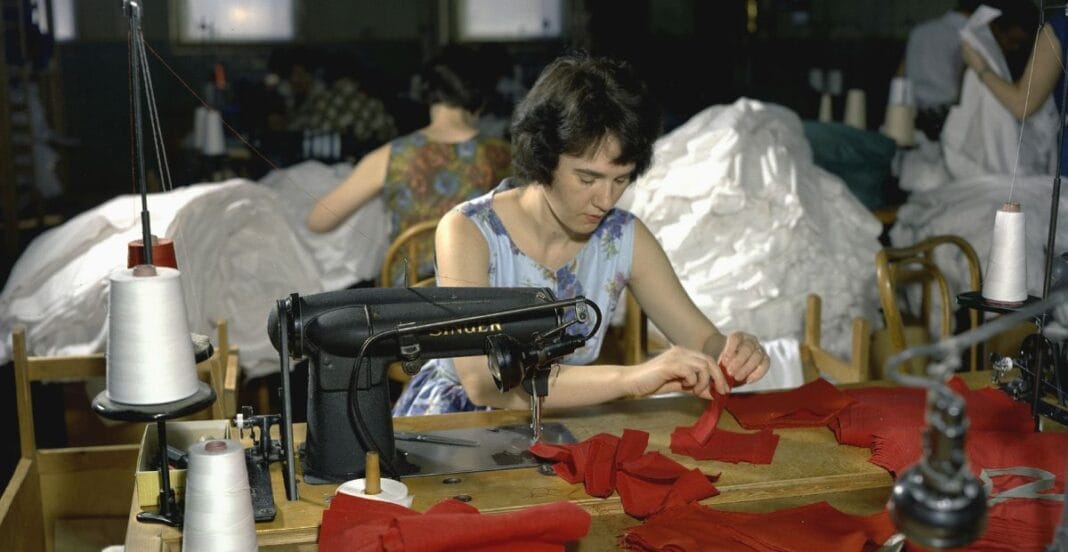Performance fabrics have carved out a strong space in modern wardrobes. Their popularity comes from how well they adapt to the demands of everyday life. Whether heading to the gym, walking through unpredictable weather, or simply staying comfortable during a long day, these fabrics are designed to help. They wick moisture, repel stains, and stretch to match movement while promising long-lasting shape and structure.
From athleisure pieces to weather-resistant outerwear, performance clothing has gone beyond niche markets and entered everyday fashion. However, while many people know what these clothes do, they don’t stop to consider how they do it.
What makes that jacket waterproof? What keeps a pair of leggings from holding on to sweat? These benefits result from carefully engineered materials and, often, carefully chosen chemicals.
How Performance Benefits Are Engineered Into Fabrics
At the core of performance fabric technology is manipulating fiber properties through chemical treatments. Most commonly, these fabrics are made from synthetic fibers like polyester or nylon, which are modified to enhance certain features.
Moisture-wicking textiles, for example, are often treated to pull sweat away from the skin and allow it to evaporate quickly. Adding elastane or other stretchable polymers usually achieves stretch and shape retention.
According to a Wiley Online Library study, the performance characteristics of these fabrics are depicted by various things, such as:
- Chemical treatment
- Fiber structure
- Yarn/fabric structure
- Inter-fiber interaction
The chemical structure in athletic wear usually contains amide, hydroxyl, and ester linkages.
Another popular treatment involves water repellency, achieved by coating the fabric with compounds that cause liquid to bead and roll off. These treatments make rain jackets and outerwear more functional and are also used in travel clothing, uniforms, and upholstery.
The Growing Concerns Around Chemical Treatments
The growing reliance on chemically treated textiles has brought more attention to the substances being used. Dyes are among the most common chemicals used in the textile industry. However, they are also a concern for environmental sustainability.
An MDPI study notes that dying is required in synthetic fibers like polyethylene terephthalate (PET) or polyamides. However, the dyeing processes can generate waste. For instance, cellulose fibers necessitate chemical auxiliaries that lead to wastewater contamination. On the other hand, synthetic fibers are one of the biggest contributors to non-biodegradable microplastic emissions.
Another among the most debated chemicals is per- and polyfluoroalkyl substances (PFAS). According to TorHoerman Law, PFAS can be used in water-resistant clothing and stain-resistant fabrics. For instance, outdoor gear, jackets, etc., can be treated with PFAS for water resistance. However, these chemicals are known to be hazardous to the environment and human health.Consider the example of firefighters, whose gear is treated with PFAS. Many individuals have even developed cancer due to these forever chemicals. They have filed a PFAS lawsuit against manufacturers to claim compensation. The plaintiffs allege that manufacturers should have known the harmful effects of PFAS and warned them about them.
Why Fabric Labels Don’t Tell the Full Story
One of the biggest challenges for consumers is the lack of clear, accessible information on what their clothes are made of. While fabric tags may list the fiber content, they often leave out any mention of coatings, finishes, or chemical treatments.
As a result, it’s hard to know whether a water-resistant coat was treated with a hazardous chemical compound or a safer alternative. The gap between marketing terms and manufacturing details keeps many buyers in the dark.
This lack of transparency also limits people’s ability to make informed choices, especially those who care about health and sustainability. Many buyers assume that if something is marketed as eco-friendly, it must also be safe. But that isn’t always true.
A fabric can be recycled, yet still contain chemical coatings that pose long-term risks. Consumers must look deeper or turn to trusted brands until the industry improves its labeling and disclosure practices.
What Everyday Clothing Can Share With Industrial Gear
It’s easy to assume that clothes made for daily wear wouldn’t rely on the same materials used in professional gear. However, the line isn’t always clear. Many consumer garments, especially those designed for outdoor use or marketed as “durable,” share similar water-resistant treatments.
Though the intended environments are different, the chemicals often overlap. For instance, many water and stain-resistant everyday wear clothing can also contain PFAS chemicals. Therefore, some of the most notorious PFAS chemicals, such as PFOs and PFOAs, are already banned in some regions. This connection raises concerns not just about individual health risks but also about the broader environmental impact.
Consumers are beginning to ask more pointed questions. Are all these chemical enhancements necessary? Could the same results be achieved through mechanical weaving techniques, or safer, biodegradable finishes? While some brands have made progress in these areas, the market is still full of products using the old formulas.
Moving Toward Safer and More Transparent Fabric Solutions
Progress is underway, but it’s uneven. Some forward-thinking brands are testing newer, safer alternatives to conventional chemical treatments. These include plant-based coatings, wax finishes, and more breathable weaves that deliver performance without relying on persistent synthetic compounds.
In some cases, the performance trade-off is minimal. In other cases, brands face a challenge: how to offer the same water repellency, stretch, or durability without the chemical support.
Another positive shift is happening in product labeling and marketing. A small but growing number of companies are choosing to be transparent about what goes into their fabrics.
Instead of listing only what the garment does, like “sweat-wicking” or “odor resistant,” they now share how those features are achieved. This gives buyers a better understanding of what they’re wearing and helps build trust in the product.
Frequently Asked Questions
Are natural fibers ever used in performance clothing?
Yes, natural fibers are sometimes blended with synthetics to create hybrid fabrics that offer a mix of breathability, softness, and performance features. However, on their own, most natural fibers don’t naturally repel water or wick moisture as effectively as treated synthetics. Innovations in weaving techniques and low-impact treatments are helping improve the performance of these materials without heavy chemical use.
How should performance fabrics be washed or cared for?
Performance fabrics often require specific washing instructions to maintain their qualities. Using fabric softeners, for example, can reduce moisture-wicking ability and clog breathable weaves. High heat can also damage elastic fibers or compromise chemical coatings. It’s best to follow care tags closely and avoid harsh detergents, hot dryers, or dry cleaning unless recommended.
Do performance fabrics degrade faster than regular fabrics?
It depends on the type and how they’re used. Some performance fabrics are incredibly durable, especially those made for athletic or outdoor use. Others, particularly those with stretch fibers or chemical coatings, may wear out faster if washed improperly or exposed to constant friction. Their lifespan also depends on how often they’re worn and under what conditions.
Performance fabrics have brought real value to everyday clothing. They’ve made wardrobes more comfortable, functional, and adaptable. But as we learn more about the methods behind their performance, it’s worth rethinking how much we truly need them. The goal shouldn’t be to get rid of performance clothing, but to produce it in ways that are safer.
The fashion industry is at a point where performance and responsibility no longer need to be at odds. New technologies and shifting consumer priorities are creating pressure for change. The more awareness spreads, the more likely it is that alternatives will become mainstream. And in time, the question might not be what performance fabrics can do, but how well they can do it while ensuring sustainability.


